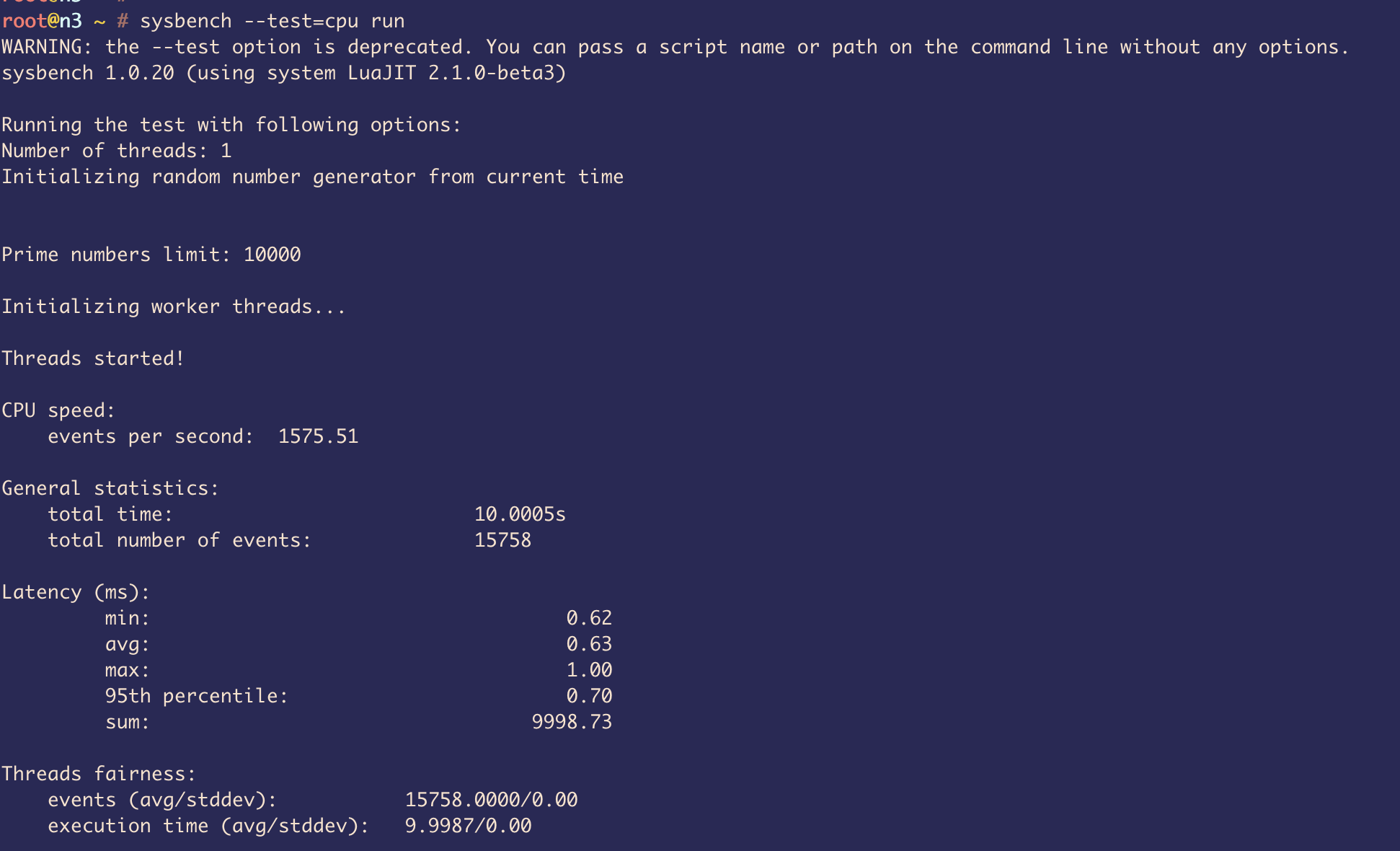How to benchmark a Linux host

When setting up a new server, it’s important to understand its performance capabilities. One effective way to do this is by using the sysbench tool, which provides various benchmarks to test different aspects of system performance. In this blog post, we’ll walk you through the steps to benchmark a Linux host using sysbench.
Step 1: Install sysbench
The first step is to install sysbench on your Linux host. You can do this by running the following command:
sudo apt install sysbench
Step 2: Test CPU Performance
To benchmark the CPU performance, you can use the “cpu” test provided by sysbench. Simply run the following command:
sudo sysbench --test=cpu run

This will stress the CPU by performing mathematical calculations and provide you with results to analyze the performance of your CPU.
Step 3: Test Memory Performance
You can also benchmark the memory performance of your Linux host using sysbench. You can specify the memory block size and total size to be used for the benchmark. Here’s an example command:
sysbench --test=memory --memory-block-size=1M --memory-total-size=100G run

This will run a memory benchmark with a block size of 1 MB and a total size of 100 GB, allowing you to assess the memory performance of your system.
Step 4: Test I/O Performance
Next, you can benchmark the I/O performance of your Linux host using sysbench. For sequential write testing, you can use the following command:
mkdir /tmp/sysbench
cd /tmp/sysbench
sysbench --test=fileio --file-test-mode=seqwr --file-total-size=10G --threads=32 --time=60 --max-requests=0 run

This will create a directory, change to that directory, and then run a sequential write benchmark with a file size of 10 GB, 32 threads, and a duration of 60 seconds. You can also try other file I/O benchmarks provided by sysbench, such as random read-write testing:
sysbench --test=fileio --file-test-mode=rndrw --file-total-size=10G --threads=32 --time=60 --max-requests=0 run

Conclusion
By using the sysbench tool, you can effectively benchmark different aspects of system performance, including CPU, memory, and I/O. Analyzing the benchmark results will help you understand the performance characteristics of your Linux host and optimize it for your specific requirements.
While benchmarking with sysbench provides valuable insights into the raw performance of your server, it's also crucial to consider how your server interacts within a distributed network environment. This is where Akmatori - a Globally Distributed TCP/UDP Balancer comes into the picture.
With Akmatori, you can ensure that your server not only performs optimally in isolation but also delivers exceptional performance when serving users across the globe. By optimizing TCP/UDP traffic management, Akmatori enhances the real-world effectiveness of your server, complementing the insights gained from sysbench benchmarks.
Extend your performance optimization beyond the server itself. Try Akmatori today to see how you can improve network performance, reduce latency, and provide a better user experience. In a world where milliseconds matter, ensure that your server is not just powerful, but also perfectly poised to deliver content and services as efficiently as possible. Explore Akmatori's capabilities now and take the first step towards a truly optimized infrastructure.
